Meter scale, scale division
Indicators for measuring pointers: voltmeters, ammeters, ohmmeters, etc., have scales.
Scale — a flat or cylindrical surface relative to which the arrow on which the divisions are drawn moves.
Sometimes the instrument has only one scale, and sometimes there are several of them, while only one arrow serves as a measurement indicator. Let's find out what these scales are and how to use them so as not to confuse anything.
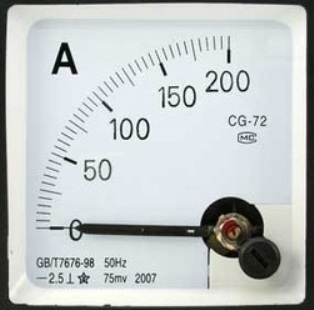
To begin with, we note that these scales are different. First, the named scales are more common, that is, the scales on which the divisions are graduated with the corresponding units of measured values, that is graduated scales.
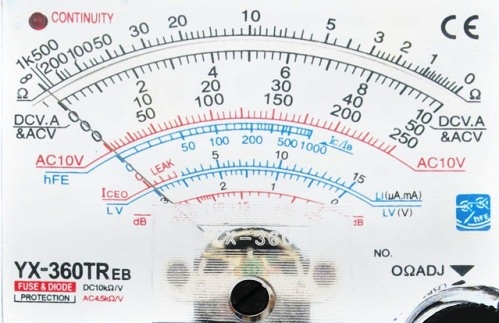
Second, there is conventional scales… If the device has multiple switchable measurement limits, then the scale will most likely be arbitrary and the same divisions will have different values at each of the user-defined limits.
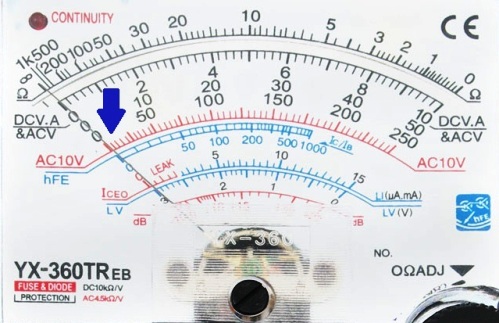
To determine the exact value of the value that is currently measured according to the conventional scale of the device, it is necessary, knowing the cost of the division, the number of divisions to the point where the arrow has deviated and where the arrow has stopped at the moment, multiplied by the cost of the division.
If the cost of the division is not clear, then it can be easily found by taking the difference between two known values on the scale and dividing by the number of divisions between these values. For example, the red scale is known to be 10 volts wide and the number of divisions is 50, which means that the division for the red scale is 200 mV.
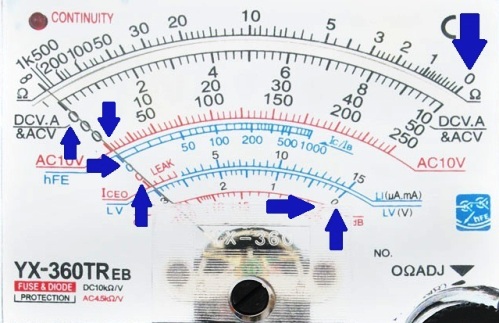
If there is a zero mark on the scale, then the scale is invoked zero… If there is no zero, then the scale is called zero. As for zero scales, they, in turn, are subdivided unilaterally and bilaterally… In the above picture you can see seven zero scales at once.
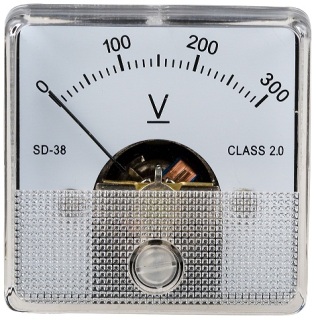
For one-sided ones, the zero is located at the very beginning of the scale (as in the figure, the head of the voltmeter with a one-sided scale), and for two-sided ones - in the center or between the final and initial marks. So, depending on the location of the zero, two-sided scales are subdivided into asymmetrical and symmetrical.
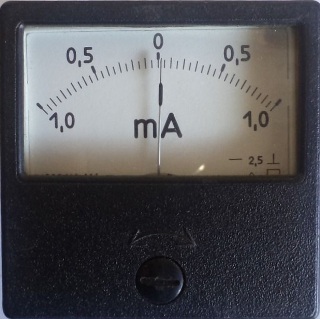
A symmetric scale has zero in the center, an asymmetric — not in the center of the scale. If the scale is zero, then the end marks show upper and lower measurement limits… The photo above shows a milliammeter with a symmetrical two-sided scale, the graduation is 50 μA, since 0.5 mA / 10 = 0.05 mA or 50 μA.
Depending on the nature of the relationship between the angular and linear distances between two adjacent scale divisions with the measured values, the scales are uneven, uniform, logarithmic, power, etc. For more accurate measurements, uniform scales are preferred.
When the ratio of the width of the widest section to the narrowest section is no more than 1.3 with a constant separation cost, the scale can now be considered uniform.
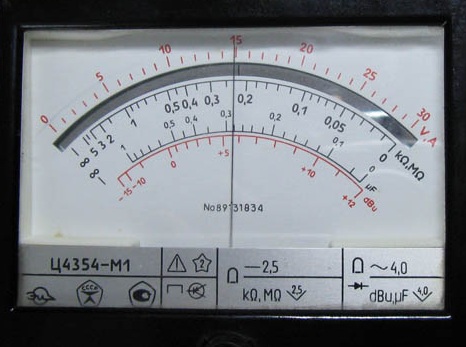
On the front side of the measuring device, not far from the scale, as a rule, the necessary markings are placed: the unit of measurement of the value, GOST, the accuracy class of the device, the number of phases and the type of current, the category of protection of this measuring device from external electrical and magnetic fields, working conditions, working position, the limiting voltage of the insulation strength of the measuring circuits (in the picture — in an asterisk «2», which means 2 kV), the nominal frequency of the current, if it is different from industrial 50 Hzfor example 500 Hz, position relative to Earth, type, device system, year of manufacture, serial number and other important parameters.
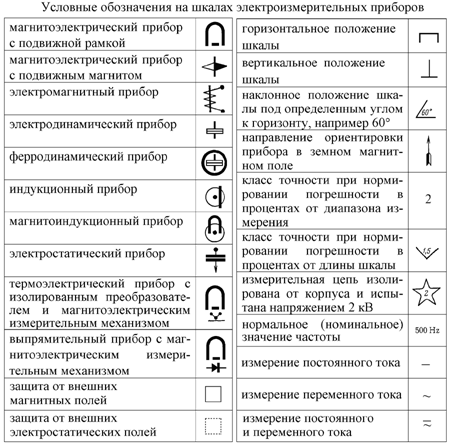
This table shows the decoding of the main designations that can be found on the scales. We hope this short article will help you learn how to correctly take measurements using dials.
